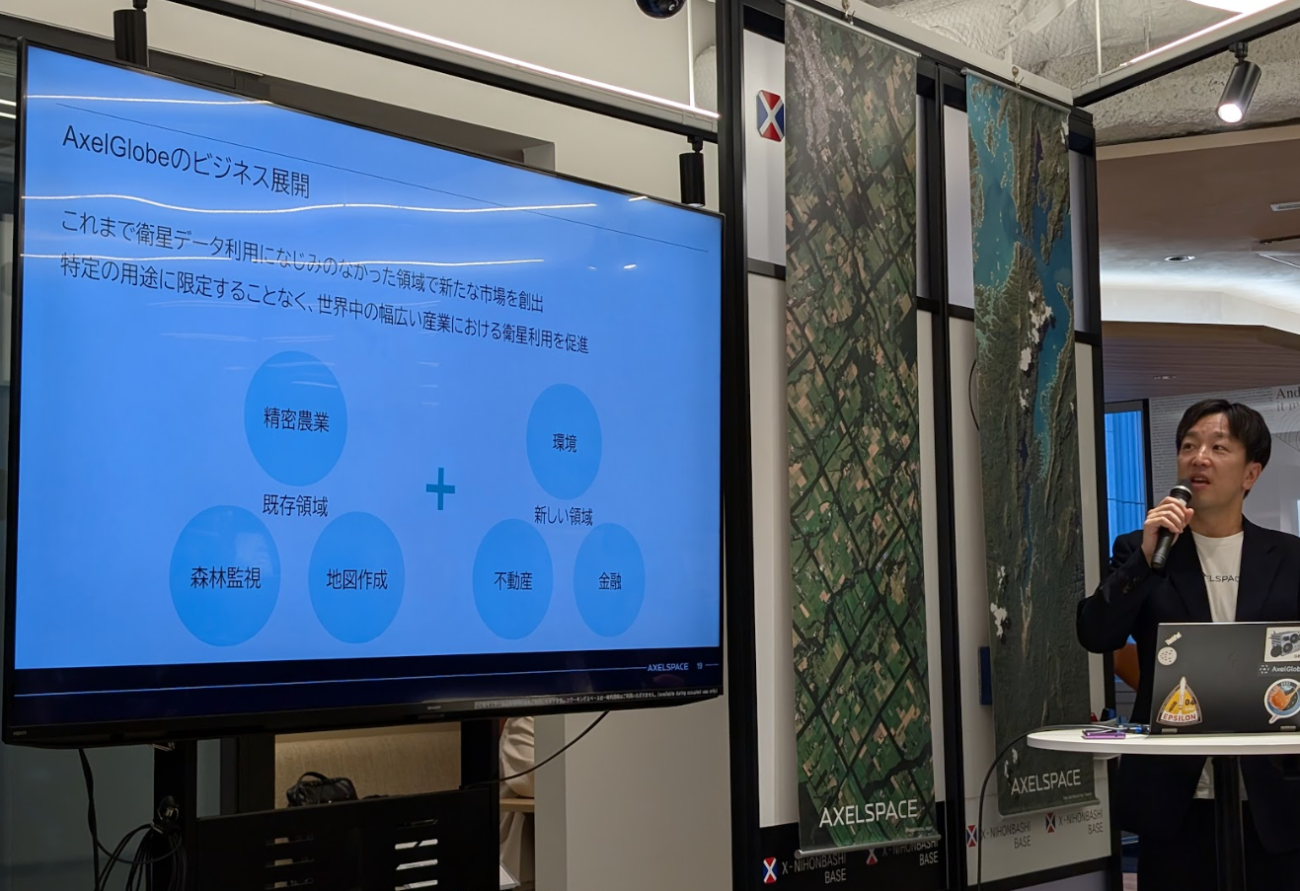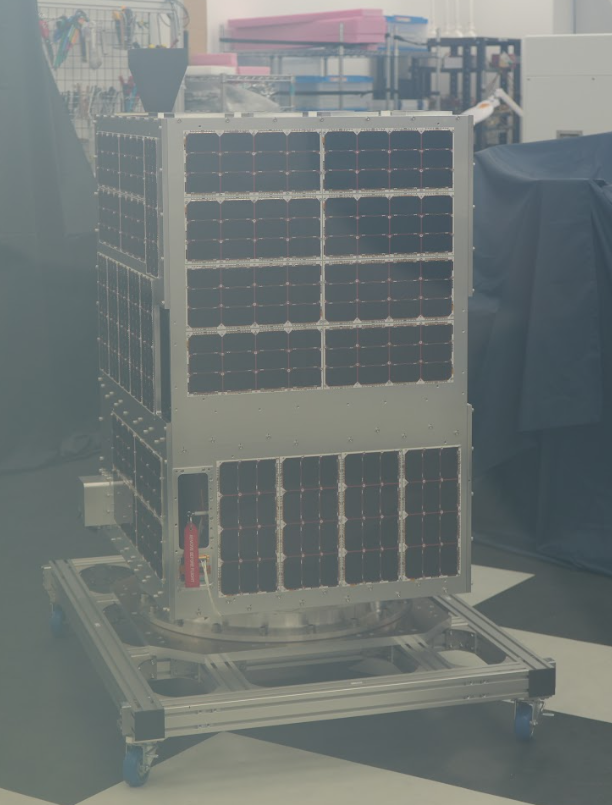Specifications and Outlook for Axelspace’s Next-Generation Earth-Observation Microsatellite “GRUS-3”:Seven additional satellites scheduled for launch in 2026
Axelspace has announced that it will launch seven of its next-generation Earth observation satellites, "GRUS-3," in 2026. We have summarized the satellite's specifications,expected use cases, and Axelspace's outlook.
On 9 April 2025, Axelspace announced that it will launch seven next-generation earth-observation microsatellites, “GRUS-3,” in 2026. Before launching GRUS-3, the company plans to launch a microsatellite called “GRUS-3α” sometime after June this year to verify the performance of the versatile satellite platform and telescope that will be used on GRUS-3.
This article summarizes the outlook for Axelspace’s earth-observation data service “AxelGlobe,” made possible by GRUS-3, along with other key points that caught the attention of the Sorabatake editorial team.
Over 60% of AxelGlobe revenue comes from private-sector customers
At the GRUS-3 press conference, the overall status of the AxelGlobe business was also explained. According to President & CEO Yuya Nakamura, AxelGlobe is currently provided to government agencies and private companies in more than 30 countries worldwide; by region, 67% of sales come from Japan and 33% from overseas.
Globally, 66% of customers are private companies and 34% are government entities.

The company has set three pillars for AxelGlobe’s growth:
1.Increasing the number of satellites to enhance observation capacity.
2.Expanding the lineup of services and products to respond to customer needs.
3.Creating new solutions through collaboration with a variety of industries.
In addition to established satellite-data fields (precision agriculture, forest monitoring, map production), Axelspace aims to create new markets in areas that have not traditionally used satellite data (environment, real estate, finance). By doing so, it hopes to promote satellite usage across a wide range of industries worldwide, without limiting itself to specific applications.

Seven microsatellites will meet daily-observation demand—up to 2.3 million km² imaged per day
To accelerate the use of earth-observation data, Axelspace will launch seven GRUS-3 microsatellites in 2026. This will boost the company’s constellation to more than ten satellites in operation.
Key features of GRUS-3 are as follows:
・Higher quality images: New optical instruments allow higher-quality images than GRUS-1, improving the spatial resolution from 2.5 m to 2.2 m.
・Larger satellite bus: Bigger than GRUS-1 bus, allowing more space for mission devices as a versatile satellite platform and better performance.
・Higher revisit frequency: With seven satellites, the same location north of 25°N latitude can be imaged every day at nearly the same local time.
・Greater imaging capacity: Combined, the seven satellites can image up to 2.3 million km² per day, about six times the area of Japan—three times the capacity of GRUS-1.
Expanded spectral bands: In addition to the six bands on GRUS-1, Coastal Blue has been added.
| Item | GRUS-3 | GRUS-1 |
| Number of satellites | 7 (GRUS-3A/3B/3C/3D/3E/3F/3G) |
5 (GRUS-1A/1B/1C/1D/1E) |
| Mass | 150 kg | 100 kg |
| Dimensions | 96 cm×78 cm ×126 cm |
~60 cm×60 cm×80 cm |
| Ground resolution | 2.2 m | 2.5 m |
| Swath | 28.3 km | 55 km or more |
| Longest collection length/td> | 1,356 km | 1,000 km |
| Daily imaging capacity (all satellites) | Up to 2.3 million km² (≈ 6 × Japan) | Up to 750,000 km² |
| Revisit frequency | Once per day (north of 25° N) |
Once every 2-3 days |
| Spectral bands/td> | Panchromatic (B/W), Coastal Blue, Blue, Green, Red, Red-edge, NIR | Panchromatic (B/W),Blue, Green, Red, Red-edge, NIR |
| Orbital altitude | 585 km sun-synchronous | 585 km, Sun-synchronous |
From a service standpoint, the company will mainly offer observations by tasking (planning observations of specific areas at specific times) to respond to individual customer requests. Any remaining capacity of GRUS-3 will be used to build an archive over areas where satellite-data demand is expected to grow.
What does adding the Coastal Blue band enable?
One standout feature catching SORABATAKE’s attention is the addition of the Coastal Blue band.
Coastal Blue penetrates water deeper than the standard Blue band, making it particularly valuable for aquatic applications. It will enable observation of coastal seagrass beds, underwater topography, and more.
For example, at the final presentation of NEDO(New Energy and Industrial Technology Development Organization)’s “Challenge: Satellite Data for Green Earth” prize program in January 2025, a team proposing a “System for Creating and Managing Seagrass Beds and Countermeasures” won the top prize in the Green & Blue Carbon track—highlighting interest in such data.
The Coastal Blue band also broadens possibilities for security as well as industrial uses. Examples include:
Industrial
・Mapping distribution of coastal seagrass beds
・Shallow-water seabed mapping & coral-reef monitoring
・Detecting water-quality pollution
・Measuring coastal water depth
Security
・Identifying landing spots via depth measurement
・Detecting changes in coastal areas
・Locating submerged obstacles
Demonstrating a versatile satellite platform—possible boost to the “AxelLiner” business
To precede GRUS-3, Axelspace is developing GRUS-3α. This is a microsatellite that has essentially the same functions and performance as GRUS-3, and is intended to verify both the optical system (including the telescope) and the versatile satellite platform used in GRUS-3.
GRUS-3α is scheduled for launch sometime after June 2025 and, as of April 2025, has already completed manufacturing.

The versatile satellite platform to be tested on GRUS-3α standardizes the satellite’s core structure and functions so they can be shared across different missions, minimizing satellite-specific customization and reducing development time and cost. This platform will be the foundational technology for Axelspace’s service “AxelLiner,” announced in 2022, where they develop and operate microsatellites for customers’ space missions.
“AxelLiner” provides a one-stop service—covering satellite manufacturing, launch, and operations—to meet rapidly growing microsatellite demand. Traditionally, satellite projects were custom-built to customer specifications; Axelspace now packages the long, complex process so customers can more easily develop satellite-based businesses.
Under AxelLiner, Axelspace offers design and manufacture of microsatellites, launch arrangements, and on-orbit operational support to private companies, government agencies and research institutions.
With “AxelGlobe” for EO data provision through its proprietary optical satellite constellation and “AxelLiner” for end-to-end satellite services acting as twin engines, Axelspace aims to further solidify its business foundations and establish itself as a leading provider of comprehensive microsatellite solutions. The company’s future moves are well worth watching.


